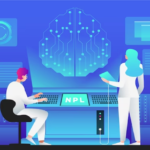
One of the most intriguing and revolutionary technologies of the twenty-first century is virtual reality (VR). Virtual reality (VR) has become incredibly popular in a variety of industries, including gaming, entertainment, and even architecture, thanks to its capacity to build immersive and interactive digital environments. However, its potential extends beyond simple entertainment. In the fields of education and healthcare, virtual reality has the potential to completely transform the way we teach, learn, and practice medical.
But what is VR really, and how does it operate? In simplest words, virtual reality (VR) is an interactive, computer-generated representation of a 3D environment. It achieves this by combining hardware, software, and sensory tools to provide the user an immersive and participatory experience. Since its introduction, this technology has advanced significantly, becoming more available, inexpensive, and user-friendly.
VR has enormous promise for use in both healthcare and education. Virtual reality (VR) can make learning more engaging and complicated by generating immersive, interactive experiences. Similar to that, it can give medical personnel accurate simulations so they can rehearse treatments and enhance patient outcomes. This blog will analyze the promise, difficulties, and consequences of virtual reality (VR) for the future of healthcare and education in the United States.
Virtual reality applications in education
The contemporary educational system is faced with a number of difficulties, including a lack of funding, outmoded teaching techniques, and disinterested students. However, a solution to these issues is provided by the incorporation of VR technology into the educational system. Virtual reality (VR) provides a distinctive and immersive learning experience that can improve students’ comprehension and engagement with the material.
Using VR in education can improve students’ motivation, retention, and critical thinking abilities, among other things. Additionally, VR can give users access to knowledge and experiences that may be difficult or impossible to recreate in the physical world. Students can participate in scientific simulations, virtual field tours to historical locations or foreign nations, and interactive learning exercises, for instance.
Many American colleges and institutions are currently utilizing VR technology in a variety of ways, including for art instruction, medical training, and even language study. Virtual reality (VR) has the power to transform the way we approach education, making it more interesting, inclusive, and useful for all students.
Virtual reality’s potential in healthcare
The American healthcare system suffers a number of difficulties, such as a lack of medical experts, excessive expenses, and restricted access to specialist care. The use of VR technology in healthcare, however, may assist to resolve some of these problems.
There are many benefits to employing VR in the medical field. It can give medical professionals a safe and affordable way to perform procedures, lessen patients’ pain and anxiety, and offer novel ways to address mental health issues.
At the moment, VR is utilized in medicine for surgical simulations, exposure therapy for PTSD and phobias, and rehabilitation for physical and mental disabilities. Additionally, virtual reality (VR) has the potential to revolutionize telemedicine and remote patient monitoring, enabling patients to receive care from the convenience of their own homes.
Overall, VR in healthcare has enormous potential and has the potential to completely change how we approach patient care, medical education, and treatment.
Virtual reality use in education and healthcare faces obstacles
While VR holds tremendous promise for use in healthcare and education, there are still a number of obstacles that must be overcome before its full potential can be realized. The technical difficulties of deploying VR in various industries, including necessary gear and software and compatibility issues, constitute a significant barrier.
VR technology’s affordability and accessibility are also major obstacles, as their high price may prevent all but the wealthiest organizations and individuals from using them.
The use of VR in healthcare and education is also subject to ethical questions and issues. For instance, it’s important to handle privacy and data security, as well as any biases in the production of VR content.
To guarantee that VR is used responsibly and effectively, it will be necessary for schools, healthcare providers, and technology developers to work together.
Future Virtual Reality Developments
With new trends and technologies appearing in the industry, virtual reality (VR) technology is evolving quickly. Two such innovations that are anticipated to have a big impact on VR in the future are augmented reality (AR) and mixed reality (MR).
VR has the potential to revolutionize a number of industries, including education, healthcare, entertainment, and even architecture. For instance, virtual reality (VR) might bring fresh approaches to experiencing movies and theme parks, virtual tours of locations, and immersive design experiences for architects and engineers.
Improved graphics, more portability, and improved interactivity are anticipated developments in VR technology. With progressively more lifelike simulations and immersive experiences for training and treatment, these innovations may have enormous effects on education and healthcare. Overall, VR technology has a promising future with countless opportunities for innovation and transformation across numerous industries.
Virtual reality’s effects on society
The acceptance of and integration into society of virtual reality (VR) technology is anticipated to have substantial social, economic, and cultural repercussions as it develops. For instance, VR has the potential to change how we work, study, and communicate, resulting in more immersive and interactive experiences across a range of industries.
However, the widespread use of VR also raises moral questions and difficulties, including the risk of addiction, privacy issues, and the potential to reinforce social inequality.
Future trends and advances in VR, such the incorporation of haptic technology for improved touch experiences or the usage of VR for telecommuting and distant work, could further influence society. These changes might have an impact on both the economy and culture, opening the door to new employment opportunities and social interactions.
Overall, VR has a wide range of social effects, both beneficial and detrimental. It will be crucial to carefully analyze and control VR technology’s impact on society as it develops, taking ethical issues and potential difficulties into account.
Final Thoughts and Suggestions
To sum up, virtual reality (VR) technology has the potential to completely change the way that healthcare and education are provided in the United States. VR can change how people learn and get medical care by providing immersive and interactive experiences, which may enhance results and expand access to care.
Policymakers, educators, healthcare providers, and other stakeholders must collaborate to solve the technical, accessibility, ethical, and social ramifications of VR adoption in order to fully realize its promise. This entails making investments in VR technology, offering instruction and training in its use, and creating moral standards for its application in various fields.
In the end, educators and healthcare professionals can create a more fair and accessible society by embracing VR technology and its potential to enhance the quality of care and learning experiences for their students and patients. VR has the potential to close gaps and open up new opportunities for people in the US and elsewhere with the appropriate approach.
Read More You May Like:








